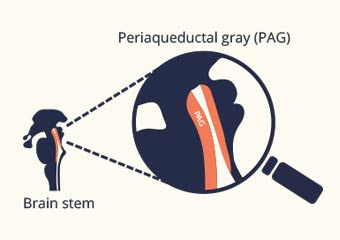Now that we’ve wrapped up the program, I’d like to take a moment to thank you for tuning in. 38,961 practitioners joined us for one or more sessions of the Treating Trauma Master Series. We believe the work you do with people who’ve experienced trauma is so important. That’s why we made it our mission […]
How Limbic System Therapy Can Help Resolve Trauma
When we’re working with clients who have experienced trauma, targeting the limbic system can make our interventions more effective. But what is the limbic system, and why is limbic system therapy so useful in treating trauma? In the video below, Bessel van der Kolk, MD answers these questions and explains why he uses this kind […]
How to Help Your Clients Understand Their Window of Tolerance [Infographic]
Clients are best able to cope with stressors and triggers when they can manage the resulting emotions. So how can we help clients who struggle to manage the anxiety, anger, and pain brought on by everyday stressors? In situations like this, psychoeducation can be one of our best tools – and one helpful concept is […]
How to Help a Client Come Back into Their Window of Tolerance
The window of tolerance is such an important concept when we’re working with trauma and dysregulation. For clients who have experienced trauma, that window often becomes quite narrow. They may space out and dissociate, or get too angry or anxious to focus. Or, they might fluctuate between hyper- and hypo-arousal. When they’re too far outside […]
How Trauma Can Impact Four Types of Memory [Infographic]
Trauma can have a profound impact on a person’s memory . . . . . . and traumatic memory can affect not only the brain, but also the body and nervous system as well. But conceptualizing how trauma can impact the different types of memory can be challenging, so we created a free tool for […]
Working with Traumatic Memory That’s Held in the Body
When it comes to the treatment of trauma, our work often centers on our clients’ feelings and sensations . . . . . . and sometimes, those sensations can present as physical pain. In the video below, Peter Levine, PhD shares a powerful story of how he helped a man trace the source of his […]
PTSD and Emotional Trauma Affects Partners of Veterans, Too
Caring for someone with PTSD can sometimes lead to secondary trauma. And researchers at the University of Utah wondered just how bad that secondary trauma could be. While completing her graduate studies, Catherine Caska Wallace, PhD and her research team studied two groups of male veterans, along with their female partners. In 32 couples, the […]
How to Rebuild Secure Attachment After Trauma
When a person experiences trauma, there’s one key factor that can play an important role in whether or not PTSD symptoms develop – and that’s secure attachment. But what happens when someone has never had a connection to a secure attachment figure? How can we help our client build the feelings of safety that are […]
What Happens in the Brain During Trauma? [Infographic]
After trauma, our clients are often left with many painful sensations and emotions . . . . . . including shame and guilt. And that’s especially true if they weren’t able to protect themselves or escape. That’s why it can be so useful to help our clients understand how their brain and body did work […]
How to Integrate the Brain and Prevent Dissociation After Trauma
Trauma affects nearly every area of a person’s brain. Not only that, but trauma disrupts the connections in the brain. And when the brain isn’t integrated, it impacts the nervous system and the entire body. So how can we work with clients to repair integration after trauma? In the video clip below, Pat Ogden, PhD […]









